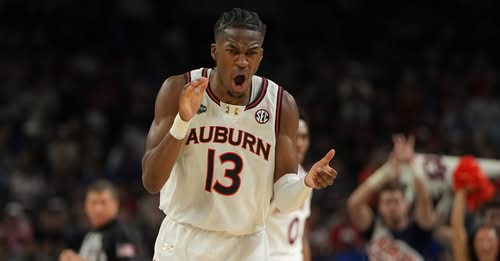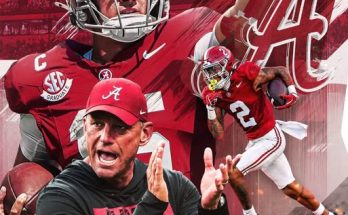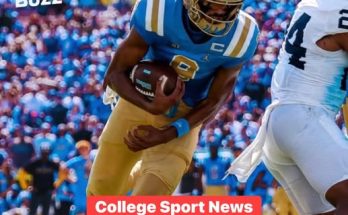The NBA is a league known for its intense competition and continuous evolution, where players often have to fight their way up from the bottom to secure a spot on a team’s roster. Recently, two promising young players, Miles Kelly and Dylan Cardwell, have both agreed to two-way contracts, a development that speaks volumes about their potential and the opportunities these deals offer in the modern NBA landscape.
Two-way contracts have become an essential pathway for emerging talent to gain valuable experience and prove themselves at the highest level. Introduced in the 2017-18 season, these contracts allow players to split their time between an NBA team and its G League affiliate, providing a platform to develop skills, adjust to the pace and physicality of professional basketball, and showcase their abilities without being confined to the traditional roster limits. For Miles Kelly and Dylan Cardwell, signing two-way deals is a pivotal moment in their careers, giving them a chance to carve out a meaningful role in a highly competitive league.
Miles Kelly, a 6-foot-6 shooting guard/small forward, has always been praised for his versatility and scoring ability. Coming out of college, Kelly’s smooth shooting stroke and defensive potential made him an intriguing prospect, though questions about his consistency and physical readiness at the NBA level lingered. His journey through the ranks has been a testament to his work ethic and determination to make it to the next level. The two-way contract he recently agreed to not only validates his progress but also offers him the opportunity to hone his skills in game situations that matter. It will allow Kelly to spend time in the G League, where he can refine his ball-handling, shooting under pressure, and defensive footwork, while still being on the radar of the NBA team’s coaching staff.
Similarly, Dylan Cardwell has long been recognized for his high basketball IQ and strong fundamental skills. At 6-foot-7 with a solid frame, Cardwell fits the mold of a modern NBA wing who can defend multiple positions and contribute in various facets of the game. His college tenure showcased a player with a relentless motor and a willingness to do the dirty work—boxing out, setting screens, and providing hustle plays that don’t always fill the stat sheet but are invaluable to winning teams. The two-way deal presents Cardwell with a critical window to translate those intangibles to the professional level. While he may not be the flashiest player on the court, his basketball smarts and effort-driven mindset can catch the attention of coaches who value role players capable of contributing in key moments.
These contracts come at a time when NBA teams are increasingly leveraging their G League affiliates to nurture talent. The G League has grown from a mere developmental league into a competitive, fast-paced environment that mirrors the NBA’s style of play. For players like Kelly and Cardwell, it means access to top-tier coaching, medical resources, and the chance to compete against some of the best up-and-coming players worldwide. The two-way deal acts as a bridge, enabling players to transition smoothly between the G League and NBA, allowing them to respond to team needs, injuries, or tactical adjustments with flexibility.
From a financial standpoint, two-way contracts offer young players a meaningful income while still leaving room for advancement. Although the salary for two-way players is significantly less than that of full NBA contracts, it is substantially higher than standard G League contracts and comes with the prestige of being on an NBA roster. Moreover, two-way deals are designed to incentivize performance. If a player impresses during their time in the G League or limited NBA minutes, they can be converted to a standard NBA contract, often resulting in a substantial pay increase and guaranteed roster spot. This makes the two-way deal not just a stepping stone but a potential springboard to a long and lucrative NBA career.
For the teams, signing players like Kelly and Cardwell to two-way contracts is a low-risk, high-reward strategy. It allows them to build depth, invest in player development, and maintain roster flexibility. Two-way players can fill critical roles during stretches when injuries impact the main squad or when certain matchups call for specific skill sets. Additionally, teams benefit from having motivated young talent eager to prove themselves, often leading to high-energy play and competitive training environments that push veteran players to maintain their own standards.
Looking deeper into Miles Kelly’s career trajectory, his path to the NBA was marked by steady growth. Kelly began drawing attention with his scoring bursts and athleticism at the collegiate level, where he faced stiff competition but steadily improved his perimeter shooting and defensive versatility. Critics pointed out that he needed to gain strength and improve his decision-making on the court to excel professionally. Over time, Kelly demonstrated a willingness to embrace feedback, refine his mechanics, and develop a more team-oriented approach. His acceptance of a two-way deal is not just about opportunity; it reflects a maturity and understanding of what it takes to break through in today’s NBA.
Dylan Cardwell’s story is equally compelling. Often described as a glue guy, Cardwell’s impact is felt in the nuances of the game—his positioning, ability to read opponents, and effort on the boards. Coaches often laud players like Cardwell because they do the hard, unheralded work that wins games. His signing of a two-way contract underlines the demand for versatile, coachable players who may not dominate headlines but are essential to team chemistry and success. Cardwell’s ability to switch on defense, contribute timely rebounds, and execute team offense makes him an attractive asset for franchises looking to build well-rounded rosters.
The significance of these two deals also points to a larger trend in the NBA — the increasing emphasis on player development and long-term roster planning. Teams are recognizing that not every player will come into the league as a ready-made star. Instead, many need time, patience, and resources to develop into consistent contributors. The two-way contract system supports this philosophy, enabling franchises to cultivate talent internally rather than constantly relying on trades or expensive free-agent signings.
For Kelly and Cardwell, their two-way deals represent not just a contract but a promise and a challenge. They have the chance to prove that they belong among the best in the world, to show that their skills and mindset are worthy of NBA minutes. It is a chance to learn from experienced teammates and coaches, to adapt to the grueling travel and schedule of professional basketball, and to develop the mental toughness required to thrive. It is also a reminder that the road to NBA success is rarely linear, filled instead with obstacles, adjustments, and moments where perseverance makes all the difference.
The journey ahead will demand dedication and focus. Both Kelly and Cardwell must seize every opportunity they receive, whether it be in practice, the G League, or during limited NBA minutes. Consistency, resilience, and a hunger to improve will be key factors determining their ultimate fate in the league. At the same time, the support from their respective teams, both on and off the court, will play a critical role in their development. Professional trainers, nutritionists, and mental health coaches are increasingly integral in shaping players who can handle the physical and emotional demands of the NBA.
Fans and analysts alike will be watching closely. Two-way contract players often fly under the radar initially but can emerge as pivotal contributors. The likes of Duncan Robinson, Alex Caruso, and others who started on two-way deals have proven that such contracts can be a launchpad for significant NBA careers. Kelly and Cardwell have the talent and opportunity; their challenge is to convert potential into performance and opportunity into permanence.



